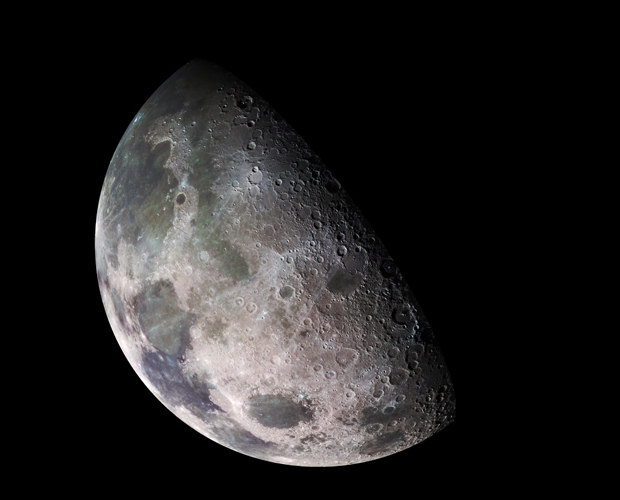
 |
|
|
|
| Earth’s natural satellite, the fifth largest satellite in the solar system | |
| Average distance from Earth | 384,400 km |
| Diameter | 3,476 km |
| Mass | 7.35e22 kg |
| Orbital period around Earth | 27.3 Earth days |
 |
|
| The Moon has no atmosphere or magnetic field. It is extremely large yet relatively distant from its parent planet. Other moons of the solar system tend to be classified as natural satellites or captured planetoids but the Moon does not fit into either of these categories. Most rocks on the surface of the Moon seem to be between 4.5 and 3 billion years old, older than those usually found on Earth. Thus the Moon provides evidence about the early history of our solar system. | |
 Our Solar System
Our Solar System
Our solar system is located on the edge of a spiral arm called Orion’s Arm, and is one-half to two-thirds of the way (28,000 light-years) from the center of our Milky Way galaxy.The Sun, Sol
The Inner Planets
Mercury
Venus
Earth
The Moon
Mars
The Asteroid Belt
Dwarf planet, Ceres
Asteroid, Ida
Asteroid, Vesta
Asteroid, Eros
The Outer Planets
Jupiter
Saturn
Uranus
Neptune
The Kuiper Belt
Dwarf planet, Pluto
Dwarf planet, Eris
The Oort Cloud
Dwarf planet, Sedna
Comet Halley
Comet Hale-Bopp
Glossary of Terms